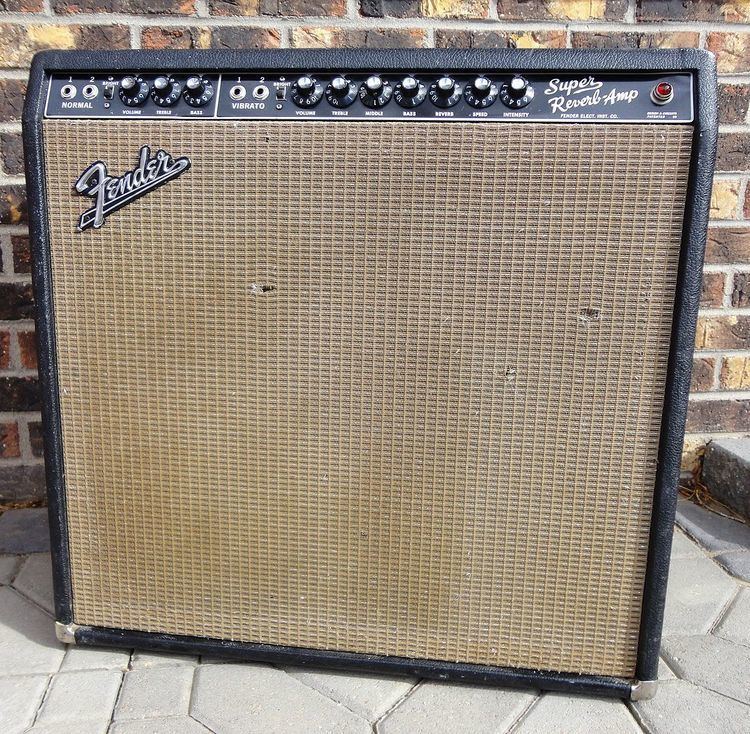 | ||
The Fender Super Reverb is a guitar amplifier made by Fender. It was originally introduced in 1963 and was discontinued in 1982. The Super Reverb was a Fender Super amplifier with built-in reverb and "vibrato" (actually tremolo). The original Super Reverb amplifiers were all-tube designs and featured spring reverb. There were two different designs, distinguishable by the color of the "face" or front control panel. Super Reverbs from 1963 through 1967 had "blackface" panels. From 1968 until its discontinuation in 1982, the Super Reverb had "silverface" cosmetics and circuitry. Early models in 1968, while cosmetically "silverface", did contain "blackface" circuitry. Fender introduced a reissue '65 Super Reverb in 2001 featuring a printed circuit board design rather than the hand-wired circuitry original '65 Super Reverb.
Contents
The Super Reverb is commonly used by blues guitarists due to its ability to deliver loud, warm tube distortion through its four 10" speakers. It is also known as having a scooped mids tonality, meaning that there is less midrange and an emphasis of sparkly treble and full, round bass frequencies.
Specifications
Tube (valve) complement:
Two channels: Normal and Vibrato, with Bright Switch
Dimensions:
Some early Super Reverb amplifiers came with the option of factory equipped JBL speakers instead of the Jensen, Oxford or Utah speakers widely used in the majority of Fender amplifiers. The JBL speakers had aluminum dust caps with larger magnets and voice coils, this gives a fuller response range and handles more power reducing the risk of "blowing a speaker". These models also add to the overall weight of the amp, making casters (wheels) a very good option.
Super Six Reverb
The Super Six Reverb is essentially a master volume Twin Reverb or Dual Showman Reverb equipped with six Oxford 10L6 (or CTS 10" AlNiCo) speakers featuring 10"/5.2 ohms (8 ohms each in series-parallel) and 100 watts RMS (changed to 135W in 1977). Introduced in 1972, this silverface combo amplifier was discontinued in 1979.
